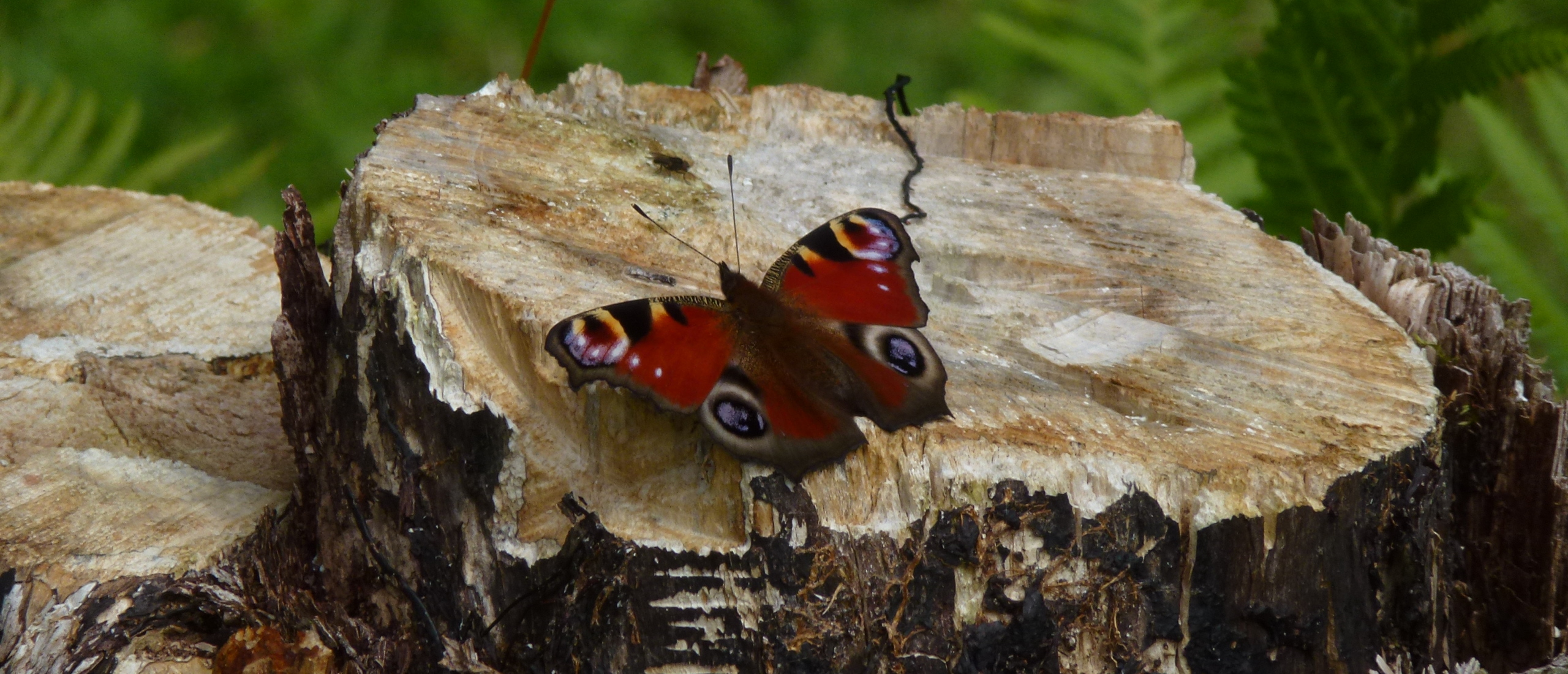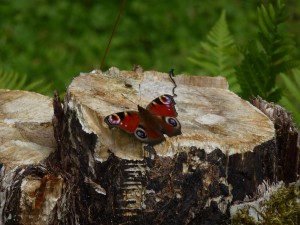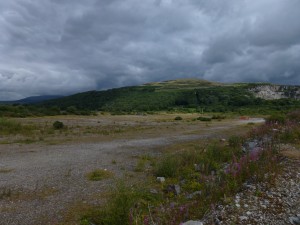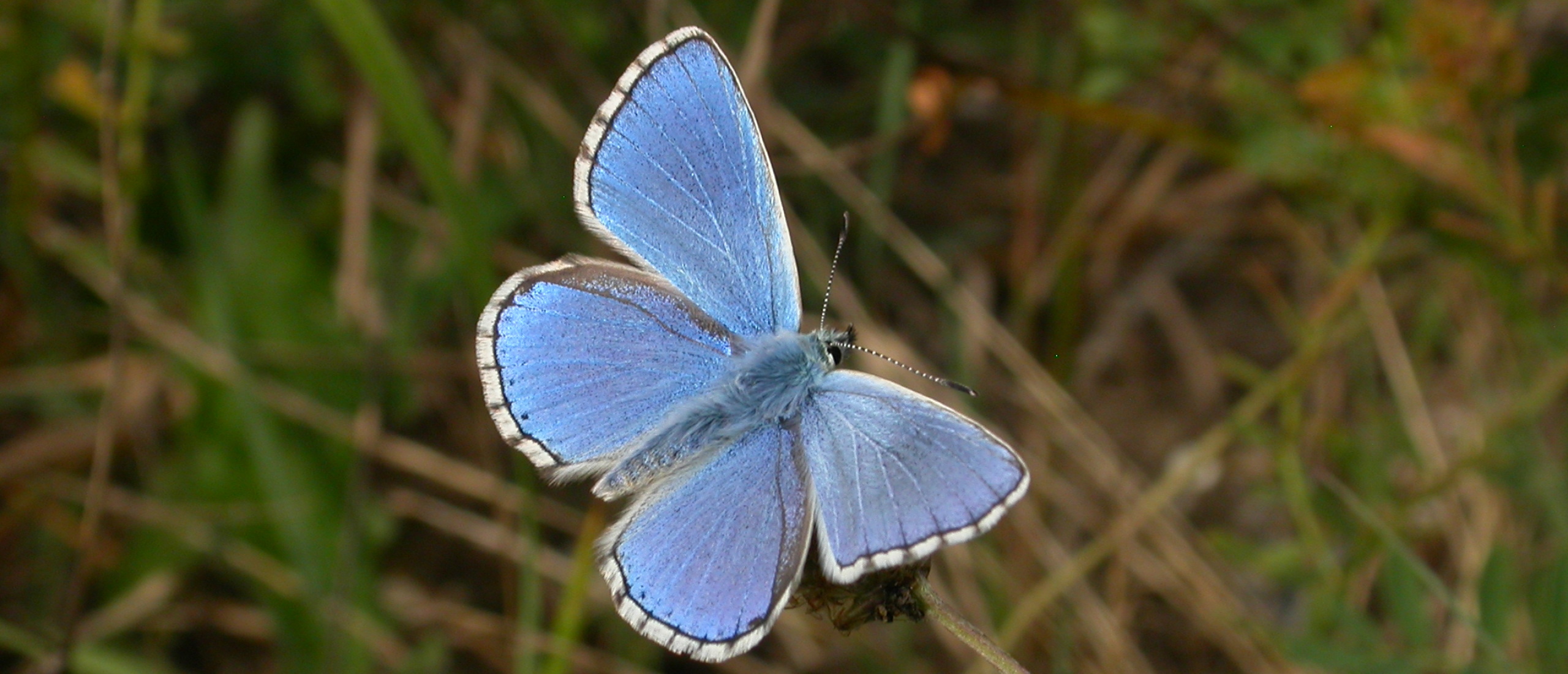
Butterfly list hits 70, and Scotland list hits 20! During the few days since I returned to Galloway from the Outer Hebrides, my two butterfly lists have passed major milestones, my overall annual list reaching 70 species, and achieving the perhaps unexpected total of 20 species during the few weeks I have been back in Scotland. While driving across the Isle of Skye on the way home, fleeting glimpses of blackish butterflies fluttering across the road were almost certainly of Scotch Argus, Erebia aethiops, but it was not until the following day, 5th August, that I managed to obtain satisfactory views of this species, which was out in some force in boggy areas dominated by purple moor grass close to Newton Stewart. This dark butterfly is one of only two members of the genus Erebia to occur in the UK, the main headquarters of which are in the Alps, Pyrenees, Scandinavia and other high mountain ranges right around the Northern Hemisphere. Scotch Arguses are one of the characteristic sights of late summer here in Galloway, their dark shapes being easily seen along the roadsides in the boggy, upland areas and along the margins of coniferous forest plantations.
Also in evidence along this same back road was another new species for my Scottish list, the Small Copper, Lycaena phleas; a highly territorial male was to be seen aggressively chasing all other butterflies which passed his prominent look-out perch on top of a tall thistle. Here several Peacocks, Inachis io, Red Admirals, Vanessa atalanta, Meadow Browns, Maniola jurtina and a totally washed-out Ringlet, Aphantopus hyperanthus, were in evidence as well.
 A pristine, newly-emerged Peacock
A pristine, newly-emerged Peacock
 A beautiful Red Admiral, clearly recently emerged
A beautiful Red Admiral, clearly recently emerged
A short drive from here took me to a large oakwood, traditional home of an elusive butterfly of the treetops, missed by most observers, the Purple Hairstreak, Neozephyrus quercus. Although not officially recorded on the distribution maps as occurring anywhere in Scotland until the 1970s, my father used to see it on his local cycle rides during the Second World War, and my grandfather F W Champion also found it here in 1948. During my childhood, we used to visit a particular oak tree in this wood, sometimes even shaking the tree if the weather was not particularly sunny in order to provoke the butterfly into flight. Purple Hairstreaks only rarely venture down from the treetops, where they obtain sufficient nourishment from the honeydew exuded onto the oak leaves by aphids. I have yet to obtain a satisfactory photograph of this elusive butterfly, but despite only intermittent sunshine, we did see one individual fluttering around the crown of one of the very same oaks we used to visit during my childhood. Today, 10th August, my father and I headed along the coast to Mossyard, a sheltered, south-facing beach at the mouth of Fleet Bay. Here we managed to add a further two species to my Scottish list, the first being Wall, Lasiommata megera, of which I saw three individuals, all of which only appeared briefly, flying rapidly along the shore or along the sheltered, sunny tracks through the gorse bushes. Much more in evidence was an astonishing emergence of Small Whites, Pieris rapae. This widespread species must be one of the most numerous butterflies in the world, and yet I have found it remarkably difficult to find here in Galloway in recent years. Now that cabbage fields are all sprayed with pesticides, Small (and Large) Whites have begun to find it harder and harder to breed, being now restricted to gardens, where they lay their eggs on cabbage plants and nasturtiums, much to the disgust of gardeners, or to the coast, where wild cruciferous plants provide an alternative food source.
 One of more than 30 Small Whites I have seen today
One of more than 30 Small Whites I have seen today
Our second destination today was the old pier at Creetown quarry, from where granite of the highest quality was extracted and exported until the 1960s, but which now provides an excellent-looking habitat for butterflies, with extensive areas of short grass dotted with wildflowers. Today, however, other than several Large and Small Whites, one further Wall and two Small Coppers, nothing was to be seen.
 Suitable-looking habitat near the Creetown quarry, where little was flying
Suitable-looking habitat near the Creetown quarry, where little was flying
 A Small Copper, ready to defend its territory against any intruder
A Small Copper, ready to defend its territory against any intruder
2013 butterfly list as of 10th August: 70 species 2013 Scottish list: 20 species












